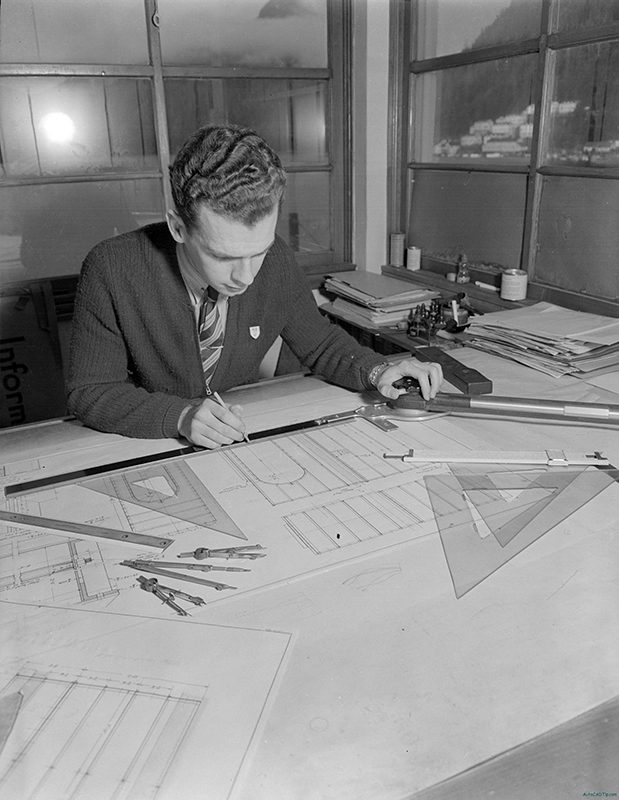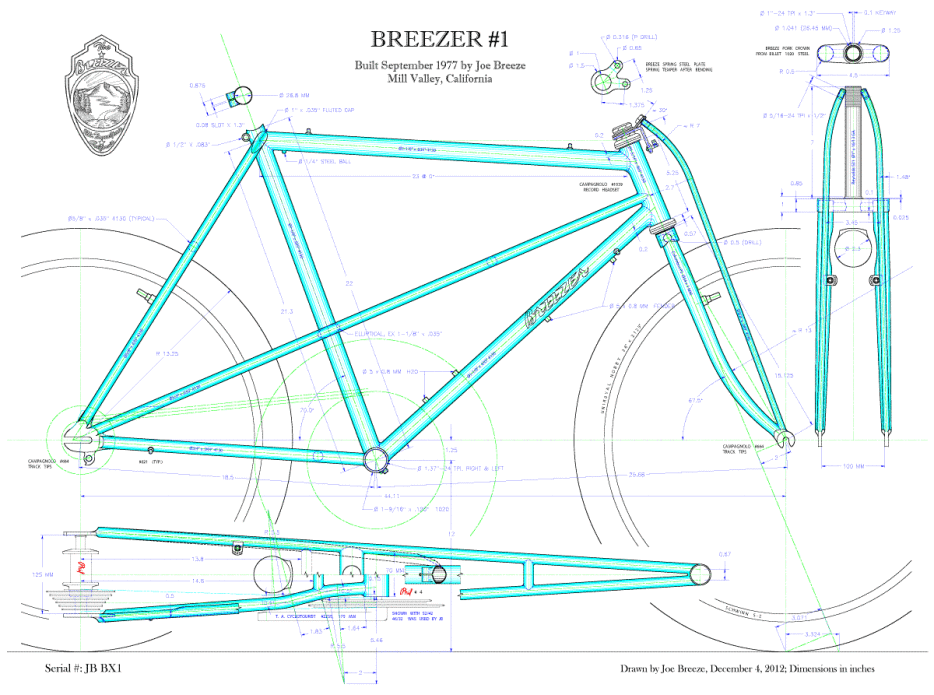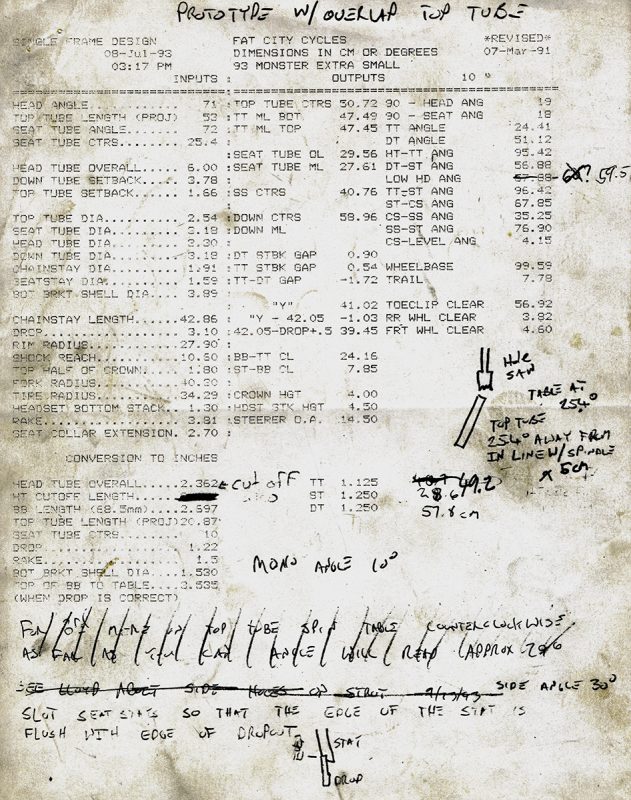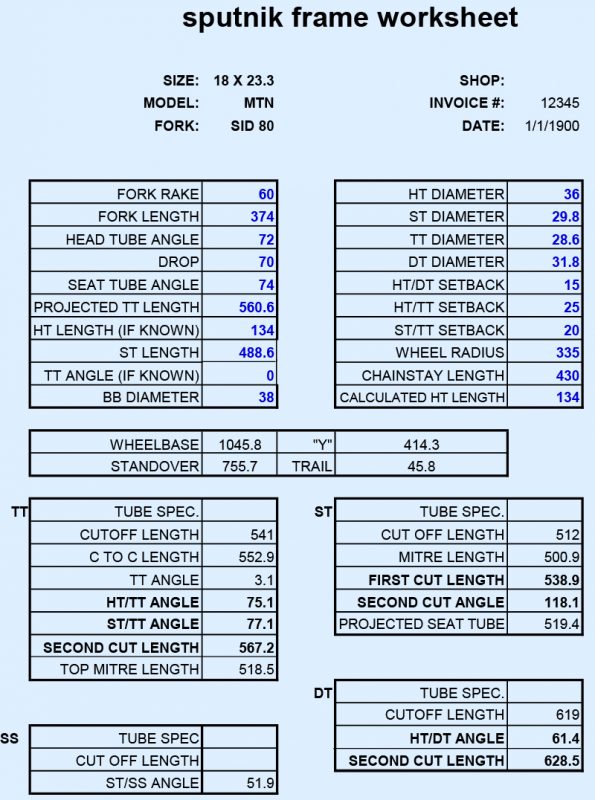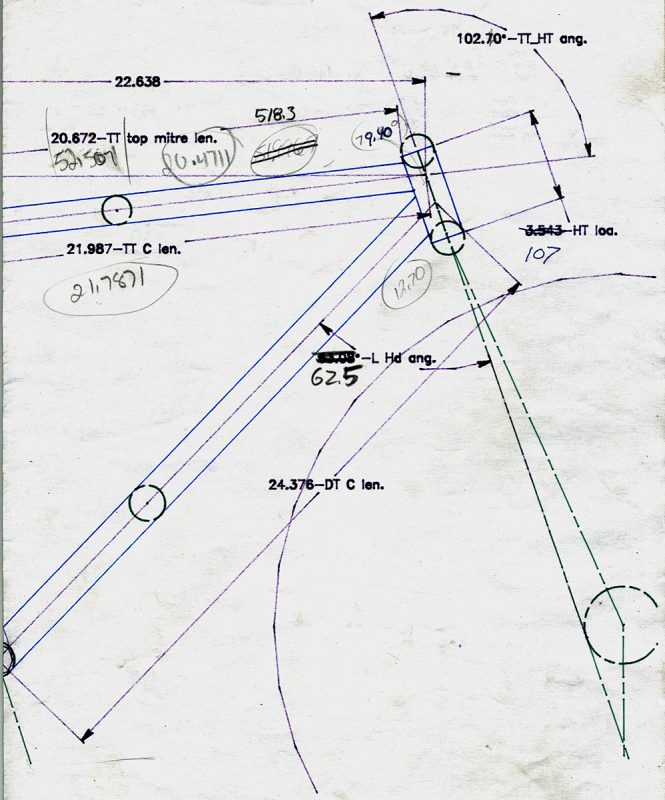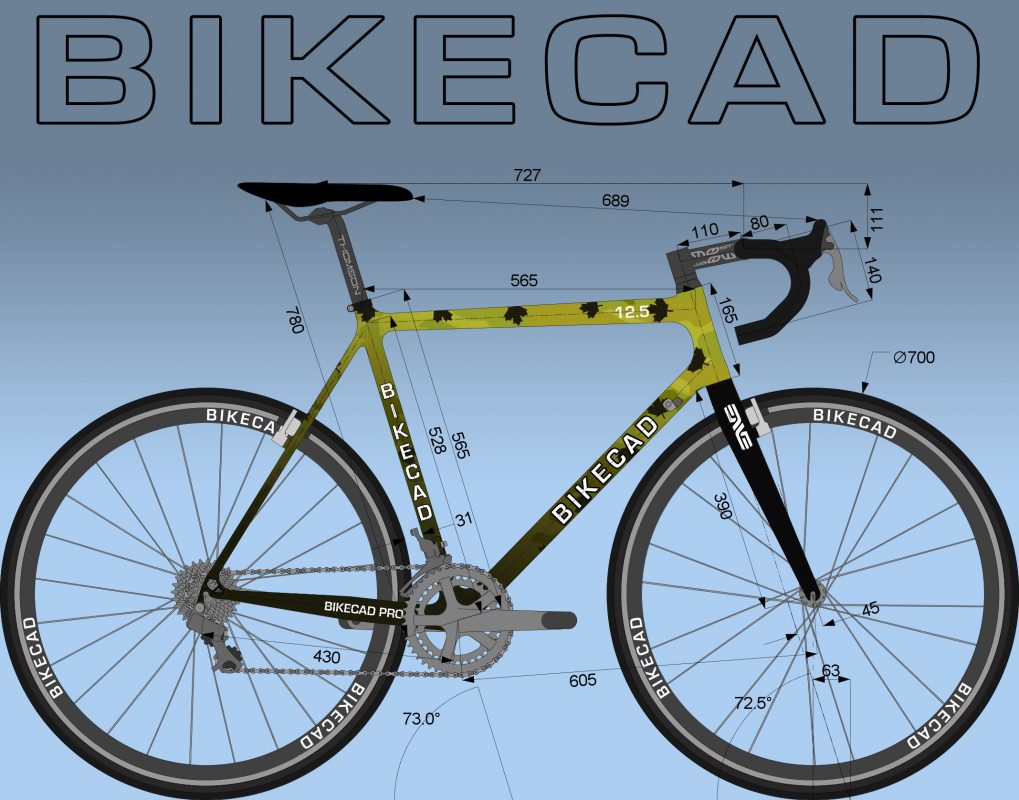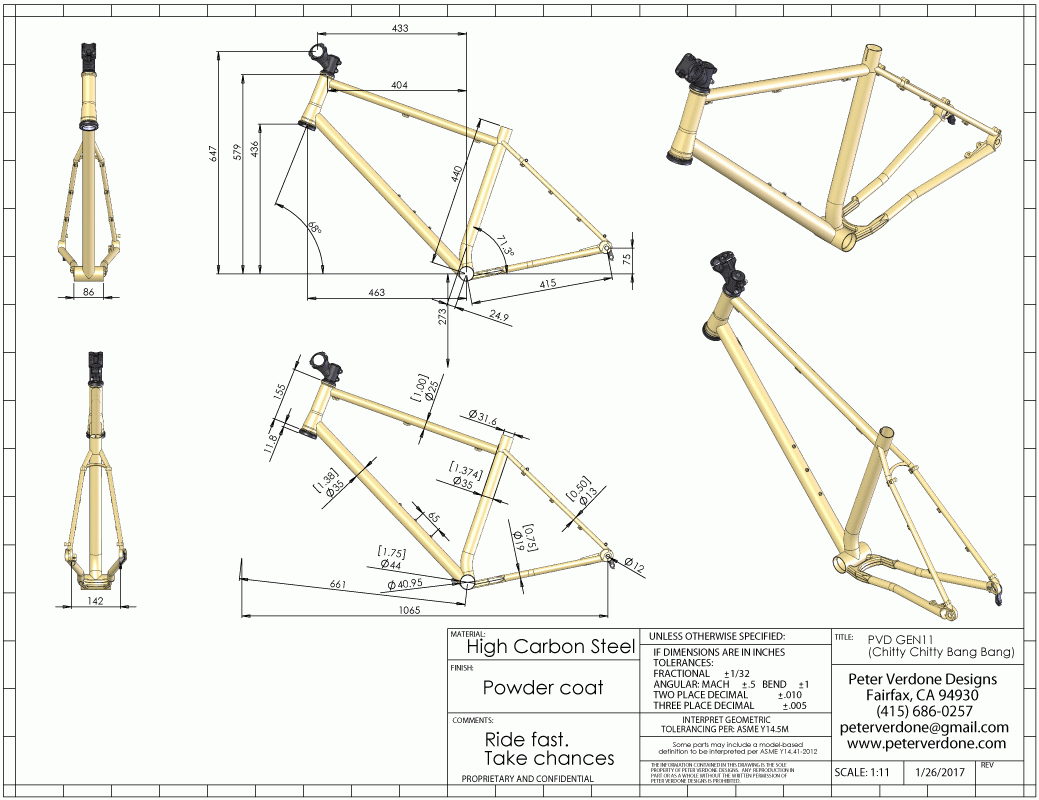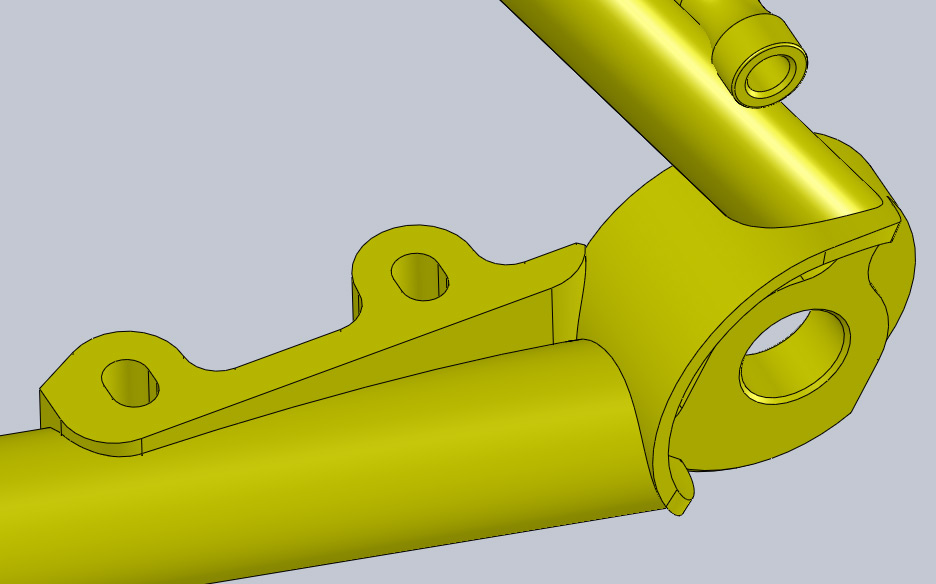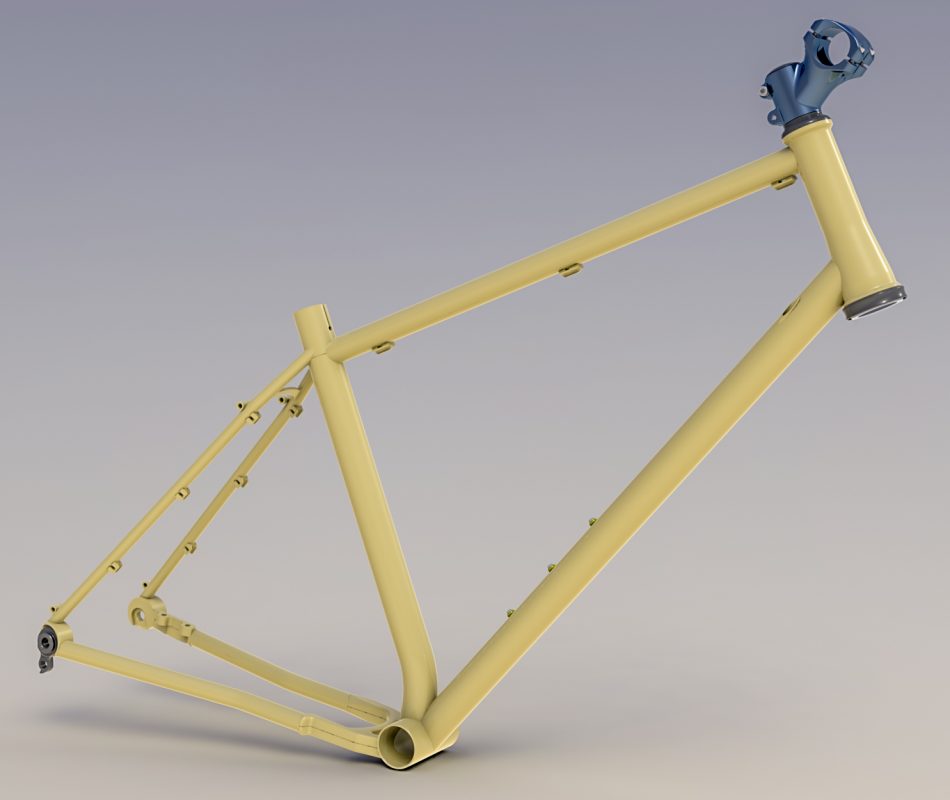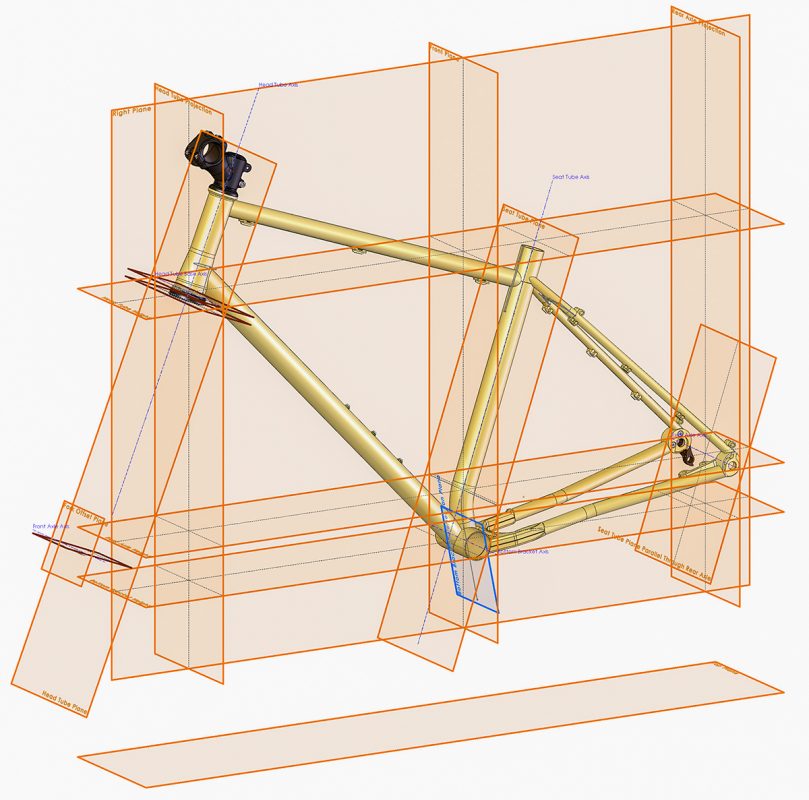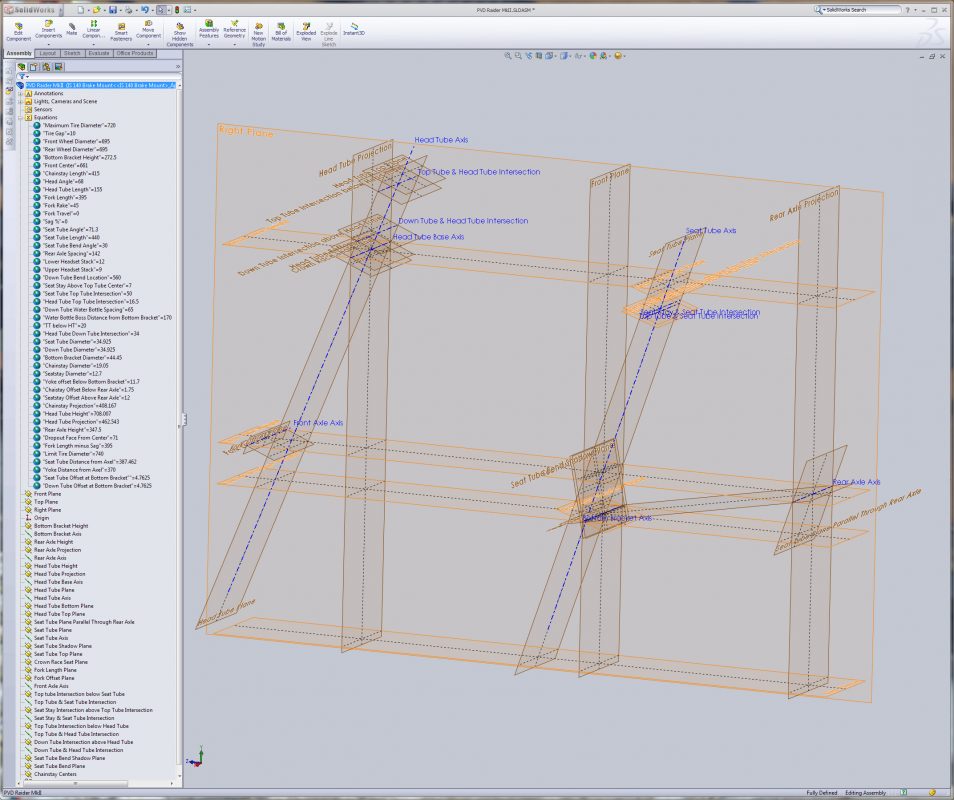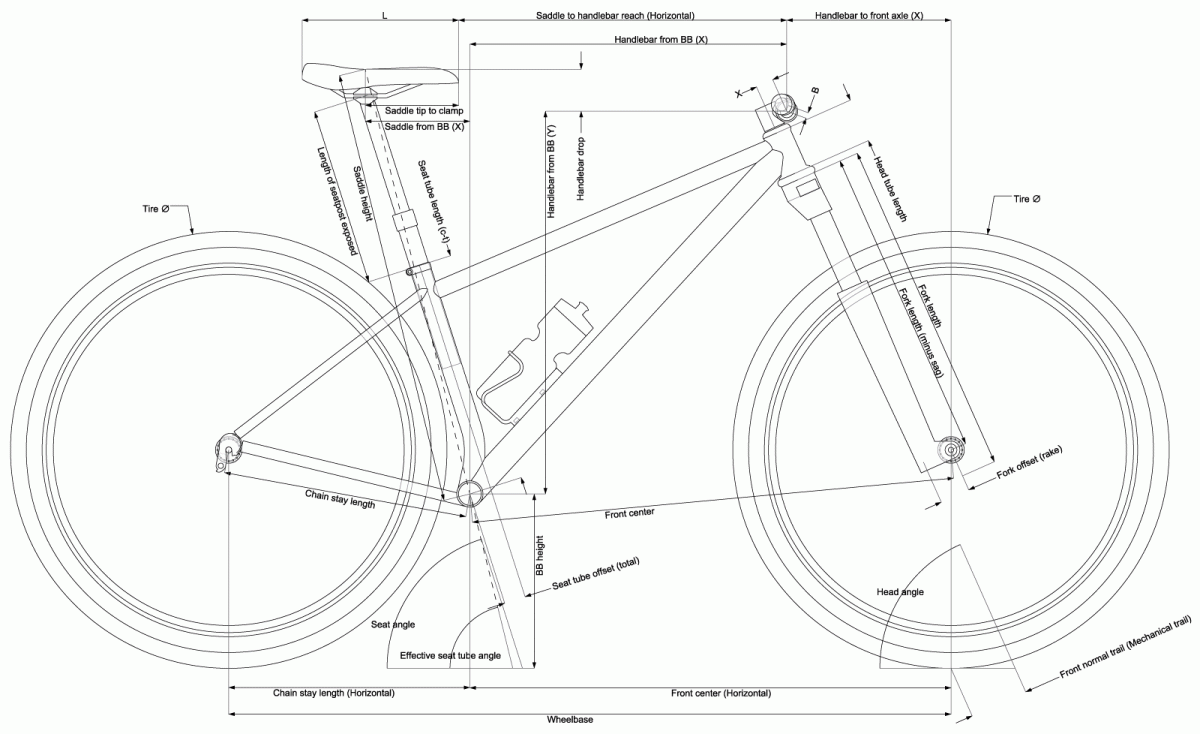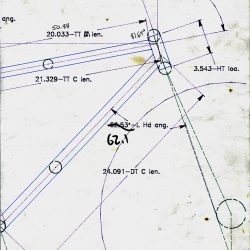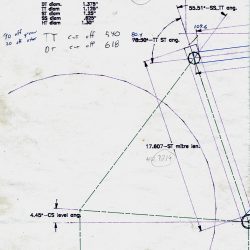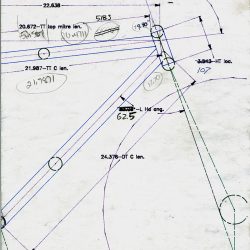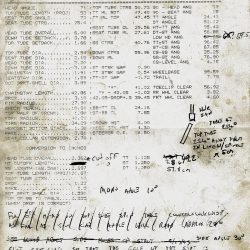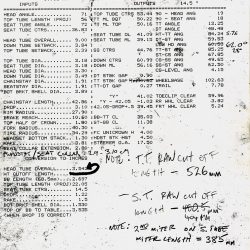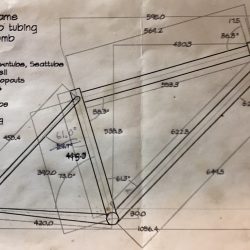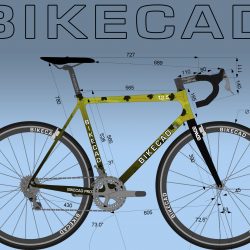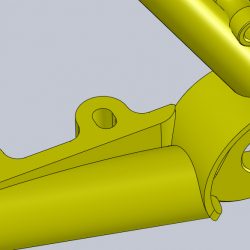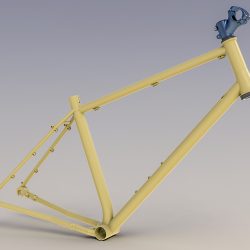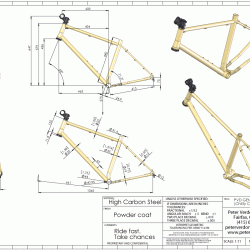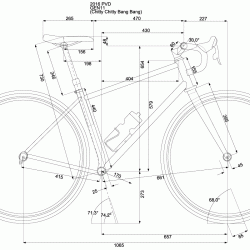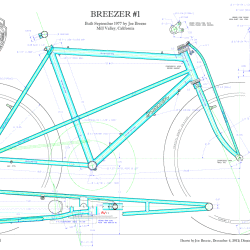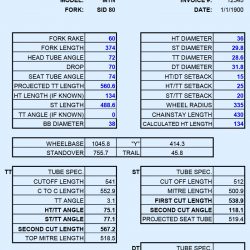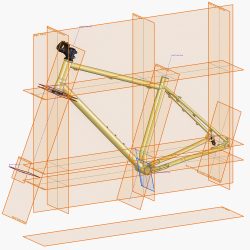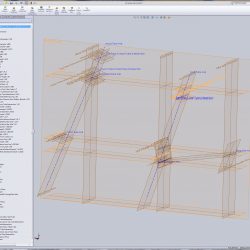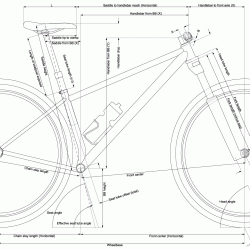Today, we don’t design on paper…
I was recently reminded of this topic by a message board thread. A kid wanted advice advice on drawing a frame. Countless people chimed in giving horrible advice. I often find that the less someone knows the more they will pass off their opinion as truth, while lacking any portfolio to back up their position.
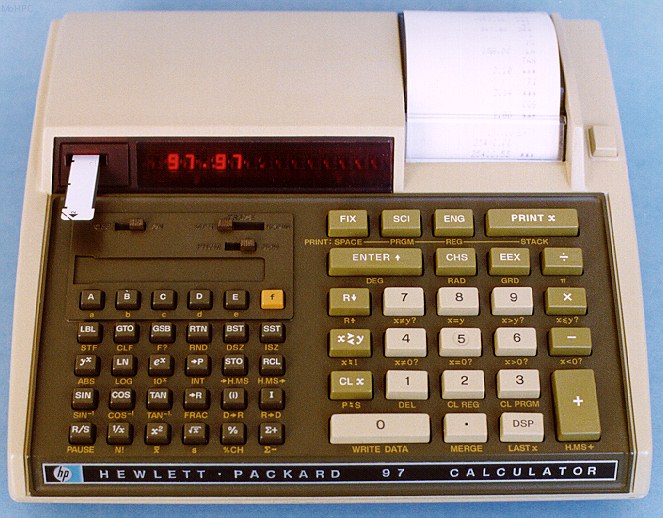
I like when I see people giving others good advice. I like when I see people giving reasonable advice. I also like when I see people giving advice based on years of real experience. What makes me mad is when people who have absolutely no concept of what they are talking about start dispensing bad advice like some kind of oracle. These people may have read some lame magazine articles, from 30 years ago, written by other people who had no idea what they are talking about, repeating these things over and over. Wrong things. Foolish things. When asked for suggested reading, like a badge of honor, they return a list of every book ever written. Not the good books, just an Amazon shopping list of crap. Idiots. Curation is valuable, cataloging is not.
You know who tells someone to draw a bike with pencil on paper at 1:1? A fucking moron. Nobody that I know or have worked with takes this kind of thing seriously. To be sure, anyone who references a Paterek Manual is not worth listening to for anything about bicycles. There’s a lot of stuff out there that just isn’t right.
Here’s an example of the train wreck that folks were actually recommending. HERE.
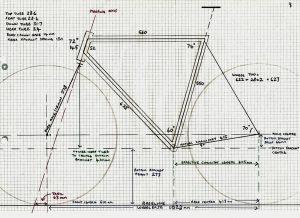
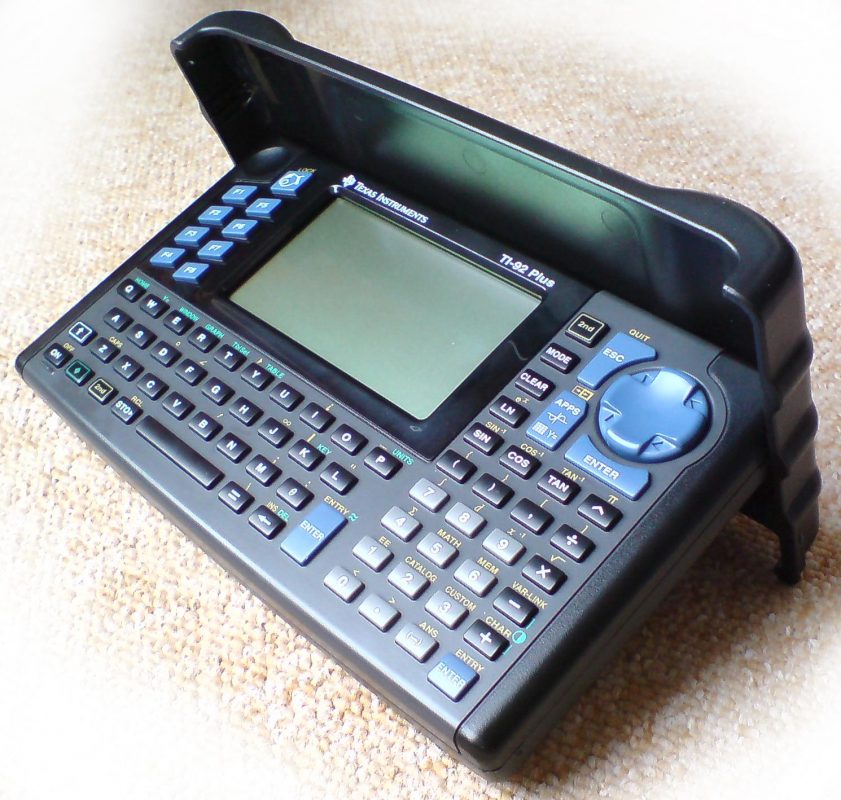
We don’t use paper to create frame drawings. We use calculators and computers. People who suggest using paper to lay out a frame really don’t know much about frame design nor do they understand bicycle fit or geometry.
We haven’t used paper in a very long time. This gets into some history I discuss in a past blog post. Basically, the guys that were doing the real deal 30 years ago were using silicon chips instead of pencil and paper to design bikes. If Joe Breeze and Chris Chance were using ‘computers’ to provide them with numbers, you need to rethink paper. That is ancient history and even then they were using calculators.
Why?
Simply, bicycles end up the way they do as a result of a host of parameters. Everything from head and seat angles to fork, seat post offsets and drops, and stem geometry. We want specific bottom bracket heights and front centers. We choose crank lengths, saddle heights and cockpit dimensions. We choose specific tube diameters to give us the ride and durability we are looking for. Quite literally, form follows function. Those parameters change and adjust as the design matures. With a custom bike, right up until tubes are cut, changes are made. New factors present themselves and new considerations are made.
This is the concept of parametrization. We break a design down to what we know or want. The rest is filled in. Similarly, it’s knowing the difference between driving and driven variables. This is very important.
If we were to sit down and draw a bike on paper; we would have to know ahead of time each and every dimension and property of our bike. We would start at some given point, typically the bottom bracket, and build out from there. The rear end would be built out and then the front (imagining the draftsperson had any idea how to connect the front to the rear) and tubes drawn in place. If we made a mistake, we would have to erase some lines. We’d draw again and erase again. We wouldn’t want to make changes that cause more work. We’d keep it easy. The print ends up looking like a real mess so we’d start over and re-do our drawing to have a clean print to work from. Got it.
What you get here is called a bad bike. I’ve designed a lot of bikes and since learning how it’s really done I’ve never known going in what any particular value will end up being. It’s just not possible. People that are only drawing on paper know and can know very little about bike design.
This all speaks to me in a visceral way. Both of my parents were professional draftspeople. My mother was talented enough to start her own business doing drafting and illustrations for patents near the time of death for paper drawing. That’s right. Paper drawing was already about dead in the early 1990s. Illustrations, renderings, and some layout work was still going on but the only real drafting that was happening on paper was for prints going to the Patent Office, as they still forbade computer generated drawings (that has since changed). I grew up helping with drafting jobs. There was a full drafting and production office in my house for me to use any time I needed growing up. In junior high school, we still had wood, metal, sewing, cooking, and drafting shop classes. Everybody took these classes. I slept through the drafting class for an easy A. This was what I grew up with. Paper drafting now is a dead art, and for good reason. I would never draw anything on paper unless a post-apocalyptic nightmare became reality and scratching around in the dirt was my only option.
Back in the day, before CAD was cheap and easy to get, many builders were making spreadsheets and programmable calculators to design the bikes. Knowing trigonometry was a necessary skill that I rarely hear people mention these days.
Even going way back, early CAD systems were used in frame design. These are prints from some pretty famous brands. Some done on plotters. They simply didn’t use paper to draw bikes. Most frames were made from pages of numbers.
Many free Boolean CAD programs are available online. DraftSight, an AutoCAD emulator, is one of the best. OpenSCAD and FreeCAD are two more.
I use BikeCAD to make a 2D layout prior to going into a 3D environment. BikeCAD is an awesome program written by Brent Curry. It’s a parametric layout program for bicycles that continually updates as the parameters are changed. Brent has done a huge amount of work over the years ensuring that the program is as up-to-date as possible for current trends and works for frame fitters and designers needs. You can play with a dimension and see how it affects others. The features that Brent has added over the years reflect many different ways of designing frames and considerations for many types of builders. I do all my fitting in that environment. For the novice frame designer, BikeCAD is a big deal. S/he can learn the terminology and details that others look at. They can focus on experimenting with hundreds of designs and fits that they can try on their own bikes. A good student of this program will build good bikes. Period.
RattleCAD is a free competitor to BikeCAD. I have little experience with it and most people I know use BikeCAD. (Also, Brent is a super good guy and shows up to listen to folks at all the events.)
After drawing a bike in BikeCAD, I usually move into SolidWorks. Most people are building simple enough bikes that they don’t need to do this. I tend to push things a bit so I have to work out some fussier problems there. I input my driving dimensions as equations and the frame is constructed from them.
Here’s a list of driving parameters that I enter into SolidWorks along with some equations used to mark up the model. As you can see, a change of one parameter often cascades into many subtle dimensions.
Using solid modeling techniques allows a designer to solve some of the more complex issues that arise. Long before tubing is ordered, a problem will become clear, bend angles are known, machining or laser/water cutting files are mailed out. I spend far more time poring over solid models of frames than I do cutting, welding, and finishing them.
There’s also the ability to see what the bike will look like, including paint colors.
Learning to build bicycles is a lot more than just connecting metal. Fine welds and perfect fillets don’t differentiate a good bike from others. What makes or breaks a bike design is rarely the connection of the joints and is more the decisions that were made to get there. The time spent learning to make good decisions is paramount and the modern tools that I suggest teach that.
…and here’s the great news. Let’s say you draw something up on a computer. You can always print out at 1:1 scale. Having a 1:1 print is not exclusive to pencil and paper. In fact, a printed copy will be far more accurate. It can be done as a full sheet or as 8.5″x11″ sections. You have options.
…even better than that! If you are producing your designs digitally, you are able to send copies to friends or peers to review. I do a lot of writing and design and the value of a good editor or critique cannot be underestimated. I’d love to have someone to send a layout to for review. A novice or semi-experienced designer should do this at every opportunity. I’ve taught many people to draw bikes and fixed lots of other’s designs. I can spot problems just by the dimensions chosen or by certain values. If you are new at this, have someone review your work. If it’s digital, you just need to email it to them or post it on a message board.
So don’t waste your time with paper. It’s not the right way to do it. Only a fool draws bikes on paper.


